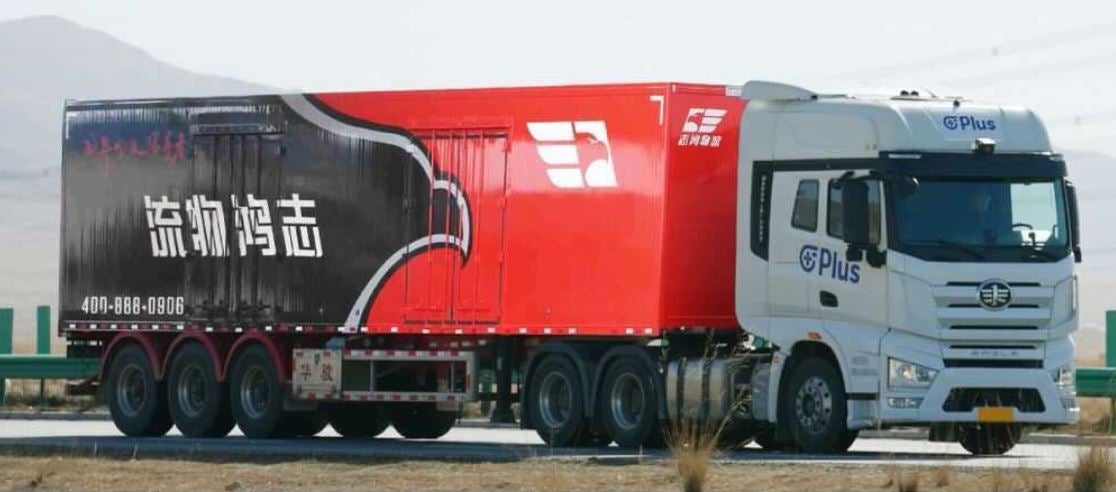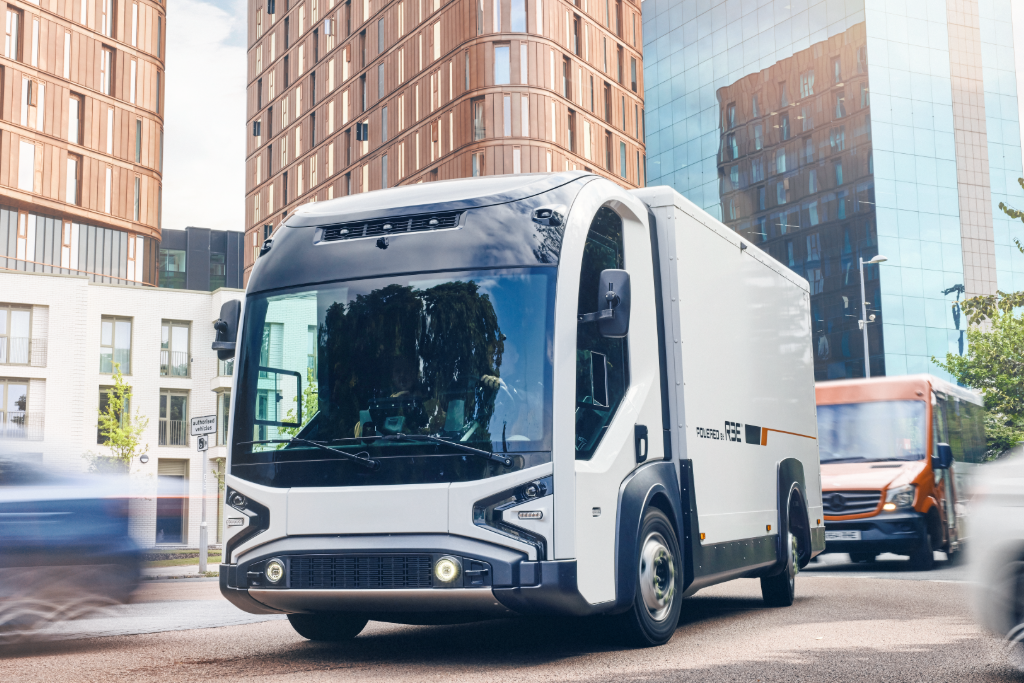Autonomous trucking developers knew the Commerce Department was on the cusp of slamming the door on certain Chinese components. In fact, this week’s preliminary rule came later than expected. Now they have to sort out what it means.
So far, they don’t have much to say. Of the leading driverless trucking companies – two of which could launch before the end of the year – only one, Plus, offered substantive comment. Others demurred or pointed to a less-than-substantive statement from the Autonomous Vehicle Industry Association.
A national security risk
First, some background. On Monday, Commerce issued a notice of proposed rulemaking that would effectively prohibit the import and sale of Chinese and Russian software and hardware commonly found in vehicle connectivity systems (VCS) and automated driving systems (ADS).
The proposal cites national security as the rationale for stopping the integration of specific pieces of software and hardware into U.S.-manufactured vehicles. That includes passenger and commercial vehicles. It also would limit Chinese AV companies from testing and deploying in the U.S. Russia is named but not really a player in connected vehicle software.
“These technologies include computer systems that control vehicle movement and collect sensitive driver and passenger data as well as cameras and sensors that enable automated driving systems and record detailed information about American infrastructure,” stated a White House fact sheet.
Automakers would have four years to remove certain Chinese-affiliated hardware like onboard sensors, connectivity control units, Bluetooth, or antennas and chip sets that allow cars to connect to the internet, according to TechCrunch.
Impact on autonomous trucking
How does this impact autonomous truck developers?
Industry leaders Aurora Innovation and Kodiak Robotics are studying the ruling and offered no comment. Torc Robotics referred to a statement from the Autonomous Vehicle Industry Association, which it recently joined.
AVIA’s statement indicated national security is a good and important thing and commended Commerce for moving rulemaking along.
“American national security is foundational. The autonomous vehicle industry has worked constructively with federal agencies and stakeholders to provide critical information about connected vehicles and how the AV industry works to ensure national security,” AVIA CEO Jeff Farrah said.
Curiously, the autonomous trucking developer with the closest ties to China offered the most definitive statement.

“Plus’s suite of driver-in to [driverless] autonomous driving solutions does not use any technologies or components that would be affected by the Commerce Department’s proposed ban,” a spokesperson said in an email.
In 2021, Plus delivered Level 4 autonomous trucks to China’s First Auto Works, a joint venture partner. Plus spun off its China business into a separate independent entity in 2023.
What about lidar?
How the ban impacts light detection and ranging software known as lidar is unclear. But industry leader Hesai, based in Shanghai, faces shackles despite claiming a 74% market share.
In late January, the U.S. Department of Defense added Hesai Group to a list of “Chinese Military Companies,” in part because of an alleged lobbying campaign by rival Ouster.
Hesai management said its inclusion is “unjust, capricious, and meritless.” The company said it neither sells nor has ties to any military in any country.
But it does sell lidar to Aurora, which listed that arrangement among business risks in its recent 10-K filed with the Securities and Exchange Commission.
“Any prohibitions, restrictions, or conditions on our ability to procure or use such products or components could materially and adversely affect our technology, operating plans, and commercialization timelines,” Aurora said in its filing.
It helps that Aurora has its own internal unit called FirstLight Lidar, which grew from its acquisition of Montana-based Blackmore in May 2019.
Ree gets new money and partners
Electric vehicle powertrain and truck developer Ree Automotive is edging closer to production of its P7 by-wire electric platform. It has new money and partners to handle its supply chain and production.
Ree is unique in that its by-wire system transfers steering and braking force by electrical signals instead of a mechanical linkage. It was the first company to receive U.S. certification from the Federal Motor Carrier Safety Administration and the Environmental Protection Agency for a full by-wire drive system.
Its Reecorners pack critical vehicle components between the chassis and the wheels. That enables a fully flat electric chassis with up to 35% more interior volume for passengers, cargo and batteries.
The Tel Aviv, Israel-based company said Monday that Roush Industries will begin full vehicle production in the fourth quarter. It expects to eventually scale up to 5,000 vehicles a year in the Detroit suburb of Livonia, Michigan.
Power from batteries or fuel cell
Ree said electric vehicles built on the P7 chassis have the industry’s lowest step-in height. They also will be autonomous-ready, and can be powered by either batteries or fuel cells.

“We chose to work with Roush because of their proven capabilities and expertise in the commercial EV market, their capacity to scale production, and their understanding of our unique business model, which is to build our vehicles to order, not for inventory,” Josh Tech, Ree chief operating officer, said in a news release.
Motherson, a Noida, India-based global automotive supplier, will oversee logistics and quality assurance. Motherson is a global engineering and manufacturing specialist that employs more than 190,000 employees in 400 facilities in 44 countries.
The company invested $15 million in Ree as part of a $45.35 million capital raise led by M&G Investment, Ree’s largest shareholder. Motherson will own 19% of Ree shares on an undiluted basis.
Cummins still chasing big hydrogen revenue in ’25
I caught up with Amy Davis, president of Accelera by Cummins, at the recent IAA Transportation truck show in Hannover, Germany. She told me the engine maker and power distribution company has a shot at hitting its goal of $400 million in revenue from hydrogen-making electrolyzers. Cummins made the projection in November 2020.
“I think it’s close,” she said. “We certainly have the [electrolyzer] backlog for that. What we’ve seen this year is people replanning their sites. Maybe funding came in a little slower, so we are juggling some of our build schedule going into 2025.”
Meeting with analysts in May, Cummins lowered revenue guidance for Accelera, the former New Power division. But the previously announced financial breakeven is still on track for 2027.
“We still think it’s coming. It’s just [at what] pace. It’s how fast the industry can move and the infrastructure can catch up,” Davis said.
Conservative approach to ginormous projects
Cummins is glad it took a conservative approach to large-scale electrolyzer projects.
“We weren’t quick to announce a gigawatt site with the player, and I’m glad we didn’t because those are all getting delayed,” Davis said. “They’re so big that the partners almost can’t get the funding. We have a couple of hundred-megawatt projects that we’re starting production for and just slowly kind of going up and up with a standardized product.”
Davis also has responsibility for Cummins’ component business and sees the company’s fuel-agnostic approach to internal combustion engines as another hydrogen play a few years out.

“There’s a lot of ways to reduce carbon,” she said. “We’re also showcasing some hybrid concepts, which can start making headway without the infrastructure.”
Briefly noted …
Navistar no more. Three years after its acquisition by Volkswagen’s Traton Group, the Lisle, Illinois, truck maker is rebranding its truck division as International Motors LLC.
The Autonomous Vehicle Industry Association is forming a Law Enforcement and First Responder Engagement Council to foster better cooperation between the first responder and autonomous vehicle communities.
J.B. Hunt Transport Inc. will be the first major shipper to test a renewable natural gas-powered Cummins X15N engine in a Clean Energy Fuels program.

gas in a Clean Energy Fuels program. (Photo: Clean Energy Fuels)
Volvo Trucks North America delivered 70 Volvo VNR Electric trucks as part of a $21.5 million funding initiative supported nearly four years ago by the Environmental Protection Agency and California’s South Coast Air Quality Management District.
Truck Tech Episode No. 84: What the November election might mean for electrification and internal combustion engines
That’s it for this week. Thanks for reading and watching. Click here to subscribe and get Truck Tech delivered to your email on Fridays. And catch the latest episodes of the Truck Tech podcast and video shorts on the FreightWaves YouTube channel. Send your feedback on Truck Tech to Alan Adler at aadler@firecrown.com.
Editor’s note: Adds that Plus spun off its China business into a separate entity in 2023.







